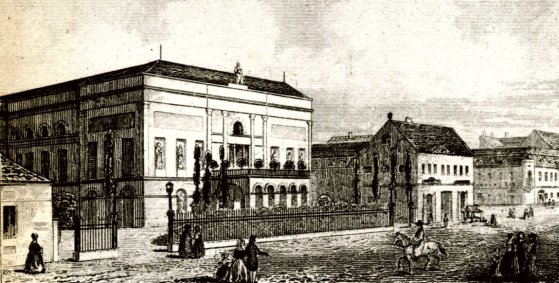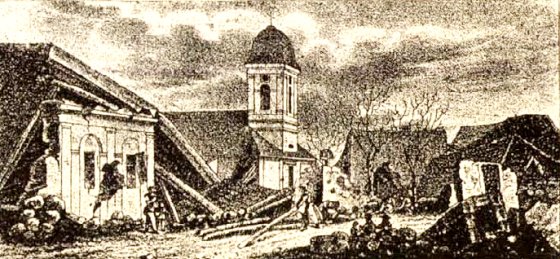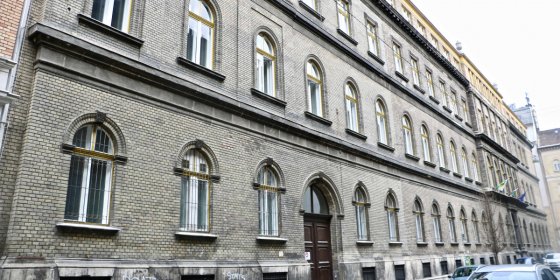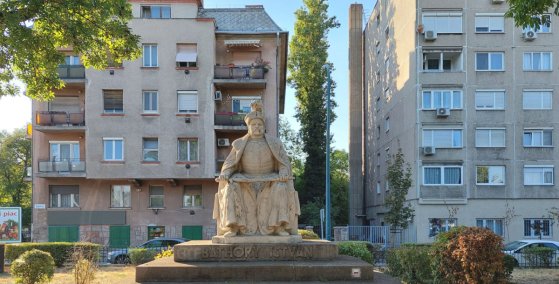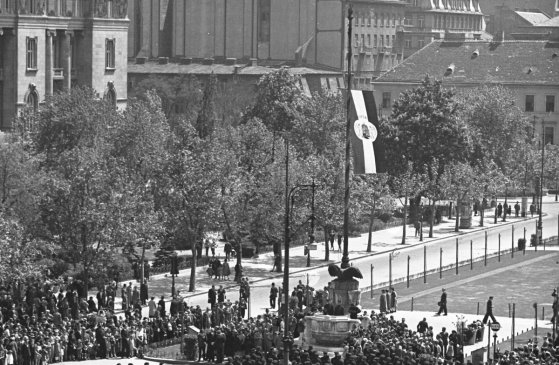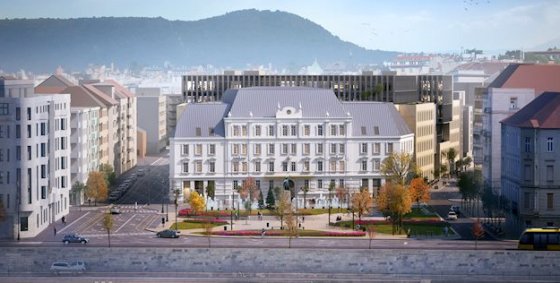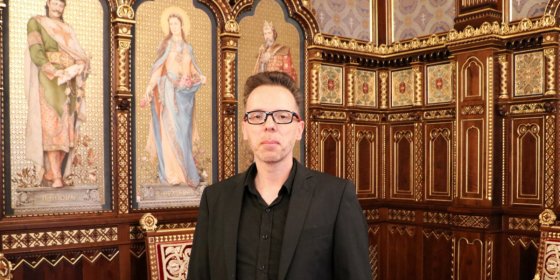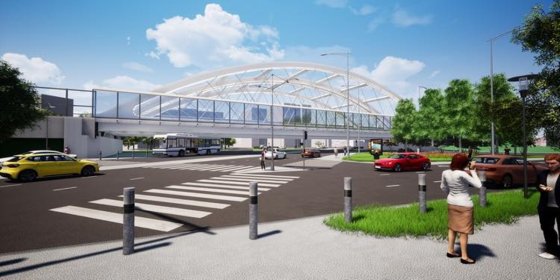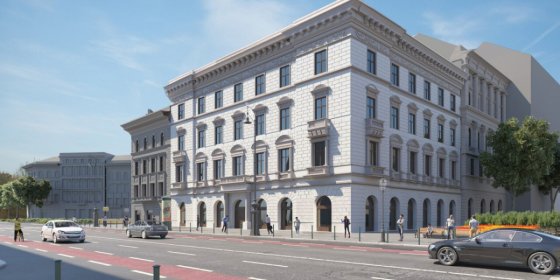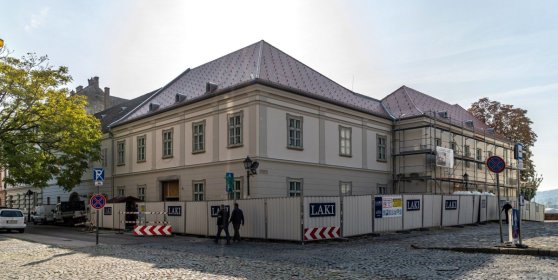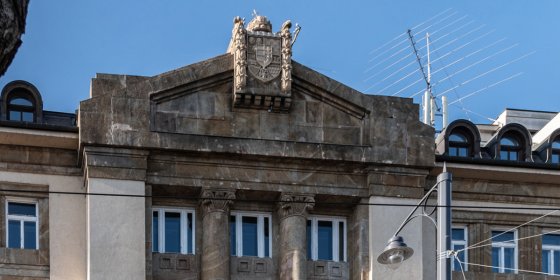 The „intertwined history” of the bridges and the city of Budapest
Which ideas and events have shaped the fate of bridges of Budapest and the cityscape? Alongside many other interesting facts, this question is also answered this newly published book by the Budapest City Archives, which introduces the history of bridges in Budapest.
The „intertwined history” of the bridges and the city of Budapest
Which ideas and events have shaped the fate of bridges of Budapest and the cityscape? Alongside many other interesting facts, this question is also answered this newly published book by the Budapest City Archives, which introduces the history of bridges in Budapest.
építészet
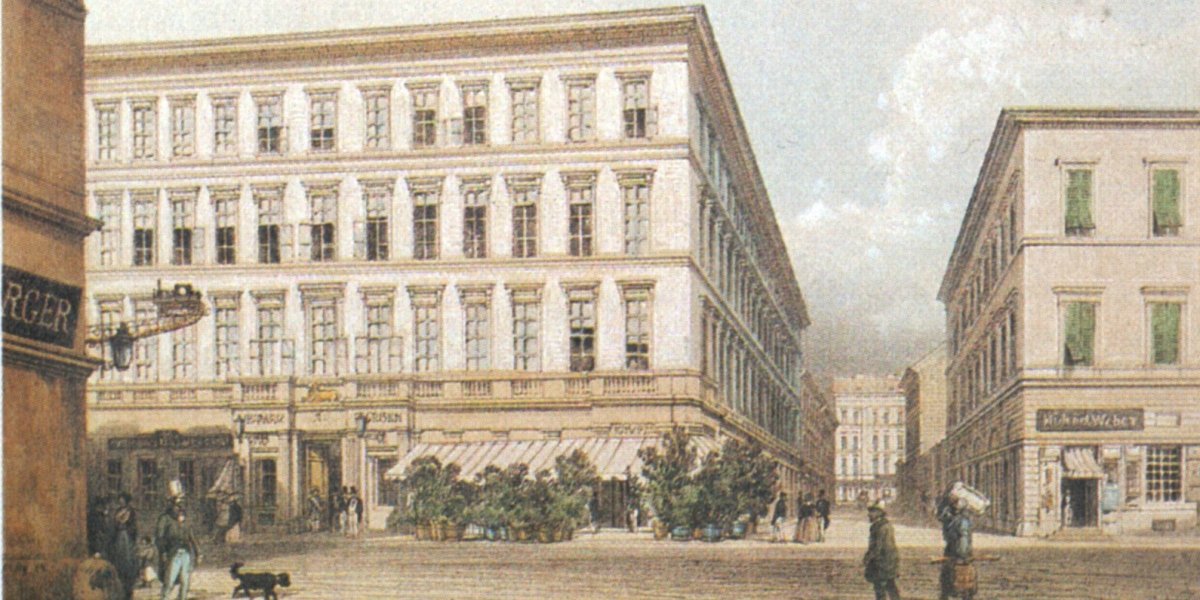 Tigris Szálló - one of the most elegant hostels in Pest of its time was downgraded to a residential house
Tigris Szálló - one of the most elegant hostels in Pest of its time was downgraded to a residential house
August 28, 2022 at 11:37 AM
One of the most elegant hotels in Pest was the Tigris Szálló ('Hotel Tiger'), designed by József Hild at 5 Nádor Street - 10 Mérleg Street in the 5th District in the middle of the 19th century. Its coffee house and restaurant were also notable, for a while the editorial office of the Pesti Hírlap led by Lajos Kossuth operated in the building, but reading evenings and classical music concerts were also held here for the eminent, cultured public. The building was significantly remodelled in 1901-1902, perhaps even downgraded a little, but even today it is still considered one of József Hild's best public buildings.
The first building of the National Theatre was handed over 185 years ago - the County of Pest embraced the cause of Hungarian-language plays
August 22, 2022 at 11:10 AM
It opened as the Hungarian Theatre of Pest 185 years ago, on 22 August 1837, but three years later it was already operating as the National Theatre. The first permanent Hungarian-language theatre was made possible by the support of the County of Pest and the generous donation of Prince Antal Grassalkovich. The building was located at today's 3 Rákóczi Road, it was first built around and expanded, then closed and demolished in 1908.
In the footsteps of an antiquity in Ferencváros - the first church on Bakáts Square was built 200 years ago
August 17, 2022 at 10:18 AM
The Bakáts Square church is one of Miklós Ybl's early masterpieces, which since 1879 has not only been the most important building in the square, but also a symbol of Ferencváros. We have been admiring its renovated exterior for years, and the reconstruction of the interior spaces will be completed in the foreseeable future. Probably only a few people know that the church has been operating since 1822 on the 9th District's best-known square. It was built 200 years ago in such a way that both the commissioner and the users knew that it would only serve the Catholic population of the area until it was replaced by a permanent church. Although the "exchange" was not without difficulties, until 1865 it was the centre of faith for the Catholics of "Franzstadt".
János Bobula designed the building of the 150-year-old secondary school in Pest
August 10, 2022 at 4:03 PM
150 years ago, in 1872, education began at the Secondary Training School of the Royal Hungarian Teacher Training Institute, i.e. today's ELTE Trefort Ágoston Secondary Training School. In the first 15 years of the institution, it did not yet have an independent building, they moved from one rental property to another. In the 1880s, the Minister of Religion and Public Education, Ágoston Trefort, commissioned János Bobula Sr. to design the school building that still stands today at the corner of Szentkirályi and Trefort Streets, which was handed over 135 years ago, in 1887.
Polish-Hungarian two good friends - the calvary of István Báthory's sculpture in Budapest
August 7, 2022 at 3:33 PM
The friendship between the Polish and Hungarian people goes back centuries, and it was founded by the kings ruling in the Middle Ages. One of the most important of them was István Báthory, who also acquired the Polish throne as a Transylvanian prince. His memory was cherished between the two world wars, and in 1933 - on the four hundredth anniversary of the monarch's birth - there were plans to erect a statue to him in Budapest, which was finally put in place only a quarter of a century later.
A forgotten monument on Szabadság Square - The messages of the Relic National Flag
August 3, 2022 at 1:35 PM
Szabadság Square is still home to many statues and monuments today, and it was no different in the first half of the 20th century. After the Trianon peace decree, the allegorical statues commemorating the separated parts of the country were erected here, and then the National Flag. The latter's idea was formulated in August 1927 - ninety-five years ago - and was followed by action half a year later.
A hotel will open in 2024 on the site of the Radetzky Barracks
November 10, 2021 at 2:00 PM
A 127-room hotel will open in the former Radetzky Barracks on Bem Square, expected in 2024. The historical 19th century building was almost completely demolished last year, leaving only the main façade overlooking the square.
"The architects of the Royal Palace were geniuses" says the re-designer of St. Stephen's Hall
August 20, 2021 at 10:00 AM
As an architect, he redrawn every detail of the St. Stephen's Hall, which opens on 20 August: the windows, historic doors, and parquet floors of the southern connecting wing of the Royal Palace. Tibor Angyal has been recreating the historic ceremonial hall destroyed after World War II for six years and, with experience, he claims that the reconstruction of the Royal Palace, which was destroyed with mad rage and method after the war so that not a single square metre of original space remains, is a historic opportunity.
New bridges in Budapest
March 8, 2021 at 9:00 AM
PestBuda has reported on the largest railway development, the Southern Ring Railway, currently underway in Budapest several times. Recently, new renders appeared of an important element of the railway line, a new bridge. Take a look.
Rebirth: Historic palace at 47 Andrássy Avenue restored
January 6, 2021 at 9:00 AM
The building has housed one of the most beautiful cafes in Budapest, a casino, a pharmacy, a glove shop and a car dealership. Until recently, the building that once housed Café Palermo was a black sheep on Andrássy Avenue, but the era of real-estate related corruption and degradation has come to an end. Standing on the corner of Liszt Ferenc Square and Andrássy Avenue, the building currently hidden by a safety net, which hides the luxury apartments being built as part of the restoration.
Stunning house with famous underground safe renovated in Buda Castle
November 13, 2020 at 10:00 AM
The house under 72 Úri Street and its underground tunnels once housed Hungary's gold reserves during the second world war and 600–700 people alongside them. In the 1950s the location was used to control the electrical grid. The house has newly been restored to its original late-baroque design as the educational centre of the Hungarian National Bank.
Pest to Buda, from Buda to Pest – 150 years of the Hungarian Supreme Audit Office
October 27, 2020 at 11:30 AM
The Supreme Audit Office of Hungary (SAO) operates in a special building. Its headquarters are among the few buildings on the bank of the Danube that were not destroyed in the Second World War. However, the building displayed on the commemorative coin on the 150th anniversary is not its current headquarters. The institution's former building was constructed before World War I on the Buda side of the River and designed by Lajos Jámbor and Zoltán Bálint.
More articles
 The „intertwined history” of the bridges and the city of Budapest
Which ideas and events have shaped the fate of bridges of Budapest and the cityscape? Alongside many other interesting facts, this question is also answered this newly published book by the Budapest City Archives, which introduces the history of bridges in Budapest.
The „intertwined history” of the bridges and the city of Budapest
Which ideas and events have shaped the fate of bridges of Budapest and the cityscape? Alongside many other interesting facts, this question is also answered this newly published book by the Budapest City Archives, which introduces the history of bridges in Budapest.
 The Bridge Report, which brought a turning point in the history of Budapest
A travel report that changed the history of Pest and Buda, as well as Hungary. The little book contributed to the change of half a thousand years of legal customs and the implementation of an investment of unprecedented size and technical quality. This book was The Bridge Report [Hídjelentés in Hungarian].
The Bridge Report, which brought a turning point in the history of Budapest
A travel report that changed the history of Pest and Buda, as well as Hungary. The little book contributed to the change of half a thousand years of legal customs and the implementation of an investment of unprecedented size and technical quality. This book was The Bridge Report [Hídjelentés in Hungarian].
 Drama on the university wall - The heroic monument was planned 95 years ago
In the constant hustle and bustle of the Egyetem Square in Pest, the students may not even notice the monument that decorates the short section of wall between the church and the central building of ELTE. However, it commemorates their predecessors, the heroes who fought for their country in World War I, and those who heroically helped them. The first design of the dramatically collapsing soldier was born in 1928, ninety-five years ago.
Drama on the university wall - The heroic monument was planned 95 years ago
In the constant hustle and bustle of the Egyetem Square in Pest, the students may not even notice the monument that decorates the short section of wall between the church and the central building of ELTE. However, it commemorates their predecessors, the heroes who fought for their country in World War I, and those who heroically helped them. The first design of the dramatically collapsing soldier was born in 1928, ninety-five years ago.

